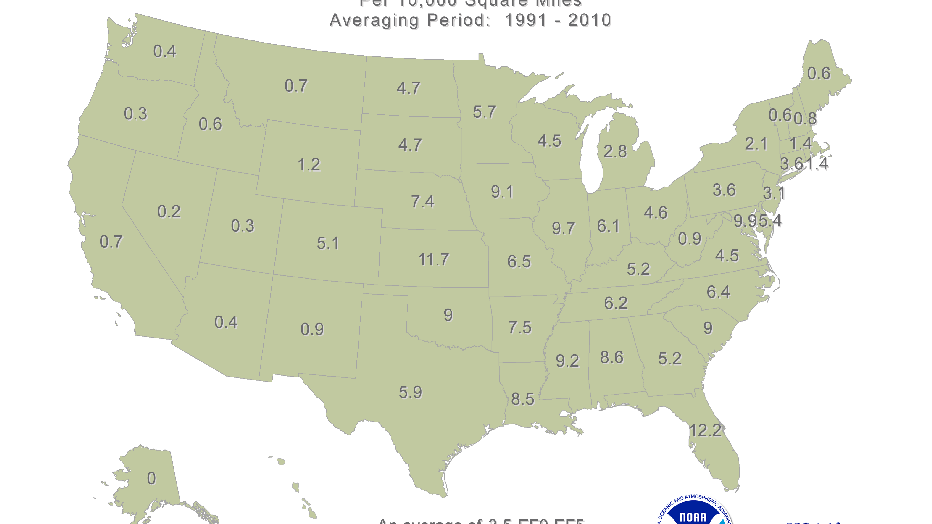Is “Tornado Alley” getting bigger?
When you think of “Tornado Alley” what image comes up? A grassy, flat landscape? A picture suitable for any postcard sent from a Great Plains state? “Greetings from Kansas, Oklahoma, Texas, Nebraska…” Traditionally Tornado Alley has been loosely defined as the area from Texas to Iowa and South Dakota. This is where the frequency of tornadoes and particularly strong tornadoes occur. But a recent study by a company called CoreLogic calls for Tornado Alley to be extended through most of the central U.S. including the southeast.
There have been a few articles and blog posts on this topic so I thought I’d add my 2 cents, which I value much higher at 4 cents. I wouldn’t mind extending the traditional thinking of tornado alley to include areas of elevated risk. If a person thinks they live in tornado alley they would be more likely to learn how to better protect themselves. On the other hand I don’t want to cry wolf and make everyone think they are likely to face life threatening weather if the risk is lower than facing a life threatening attack by adorable kittens. Here is what the CoreLogic study has to say. If you want to read the entire thing (fyi, it almost put me to sleep) CLICK HERE.
First of all I wasn’t all impressed by the study. It didn’t seem to be written by a meteorologist since it used a few incorrect terms and questionable statements. It did bring a few new ideas and facts to the table but most of what was published is already known. Today’s tornado alley does not have borders. It fades in and out as you cross the Great Plains. It’s kind of like playing Horse Shoes where being close does count. While the highest frequency of twisters remains in the Central Plains, a few more hotspots appear in Illinois, Mississippi, and Florida. The Florida hotspot is interesting. While the state does have a high frequency of tornadoes most are weak rated EF-0 or EF-1. Florida has a high number of “landspout” tornadoes as opposed to the stronger supercell tornadoes in other parts of the country. However, the hotspots of Illinois and Mississippi include their fair share of EF-2 to EF-5 tornadoes.

The study also points to an increase in reported tornadoes over the last 60 years. However a bar graph of these reports seems to closely follow technology. There is a quick increase around the time weather radars began springing up around the country (1950s to 1980s) followed by another significant jump around the time the Doppler radars, which can detect rotation, replaced the old reflectivity radars which could just see what was falling (1990s to 2000s).
The bottom line is southeast Wisconsin is not, and will not be part of tornado alley. We will stay on the fringes of course with our average of 23 tornadoes statewide each year. Improved weather equipment (National Weather Service radar just upgraded to dual polarization) and means of receiving alerts (texts, email, Facebook, NOAA weather radio, TV, etc.) are saving more lives than ever before. But since we’ll never reach the point where a singing telegram immediately arrives at your home or office to give you a personal warning it will always be up to each individual to be weather savvy and keep themselves out of harms way.

